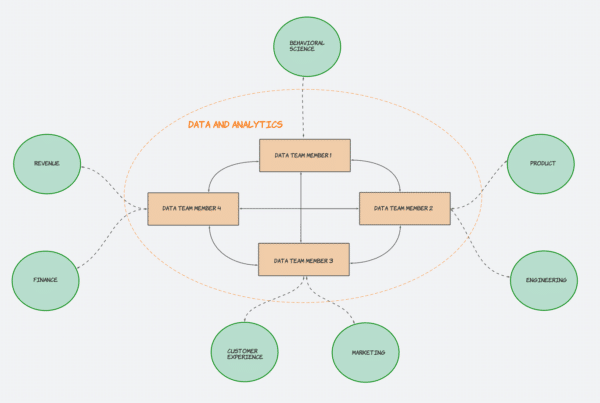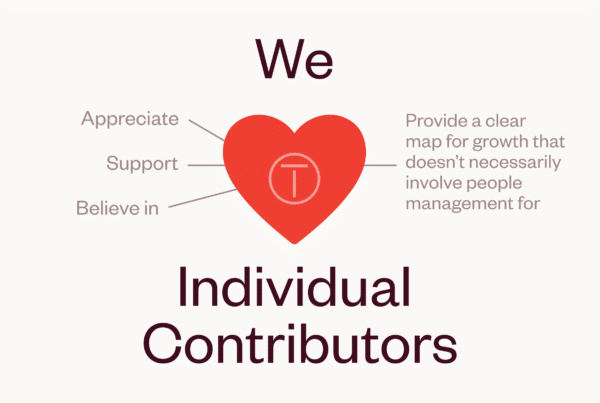Google famously identified five keys to successful teams: psychological safety, dependability, structure and clarity, meaning of work, and impact of work. A key takeaway from that is you can’t just group talented developers together and expect success. In fact, this success hinges on developers’ collaboration, clear direction and structure, and a shared commitment towards the end product.
What is psychological safety?
Google shared that psychological safety was the most important of the five keys to successful teams. So, what does that actually mean and how do we build more of it? Psychological safety occurs when trust is established within teams and individuals are comfortable sharing ideas, feedback, and suggestions with teammates without fear of negative consequences. Establishing this within teams has compounding benefits because these types of exchanges are key to improving and they promote the generation of even more ideas. Teammates know they’ll be heard and will naturally brainstorm more ways they can help make the team better.
A lack of psychological safety, however, can be detrimental to a team’s success. It discourages teammates from sharing, stagnates change, and often leads to individuals not investing the time to brainstorm new ideas given the assumption that they won’t be heard. If you shared that your team could benefit from testing out GraphQL or leveraging a great component library, but those suggestions were immediately dismissed, why would you put in the effort to propose other improvements?
How to build psychological safety
One way to foster the development of psychological safety is through well-structured retrospectives. Retrospectives allow for teams to reflect on what they’ve been doing, share ideas on how to make improvements, and collaborate on potential experiments and action items. Over time, well-run retrospectives lay the foundation for building psychological safety.
Retrospectives need to be a safe space for ideas, which requires buy-in from the team in order to be successful. It’s important that this safe space is established from the outset and that team members know that they can contribute without fear of negative consequences.
Next, it’s important to have a designated person facilitate each retrospective session. The facilitator is responsible for time-boxing discussions, keeping conversations focused, and ensuring everyone has an opportunity to speak. Naturally, some people will speak more than others, so at times the facilitator will need to be intentional about asking the quieter teammates for their thoughts and opinions.
Another critical component is dedicating enough time to brainstorming ideas. Individuals need to be able to process the context and think through what actually happened in order to generate ideas on how to make things better. For example, thinking through process changes, knowledge sharing strategies, documentation improvements, innovation options, and properly addressing tech debt takes time.
Relatedly, participants should have an easy method to share their ideas. One simple method that works well is letting everyone write down their ideas on sticky notes and then reading them out loud after brainstorming is completed. This method is particularly helpful for teammates who are introverted or less likely to speak up in a group setting. It also helps ensure all voices are heard, not just the loudest ones. Anyone on the team can have a great idea, so it’s important to not limit the pool of potential contributors. Also, by leveraging the full capacity of the team, the burden doesn’t consistently fall on organizational leadership.
How to start implementing
If you’re looking for a way to get started, there are a number of well-documented formats to try. The Lean Coffee format is a well-structured option if you’re not sure which one to experiment with first. Make sure to mix things up with new formats or even consider creating your own. Most importantly, have fun with it! There is always room for improvement on any team you’re on. The beauty of retrospectives is that over time, changes will make everyday life better for your team. Sometimes these changes might lead to small incremental improvements; however, they also have the potential to make significant impact as well.
If everyone on a team is bought in, you will all come up with helpful ways to make your team function better. As an additional bonus, you’ll also increase psychological safety. This establishment of psychological safety within your team’s retrospectives will then start to carry over into all of your work. Teammates will offer their suggestions and share feedback more often – and they’ll do so closer to when issues first arise. By utilizing retrospectives effectively, you can provide the structure needed to build psychological safety and ultimately become a more successful team.
Head over to our engineering careers page to learn more about how to join the team!


